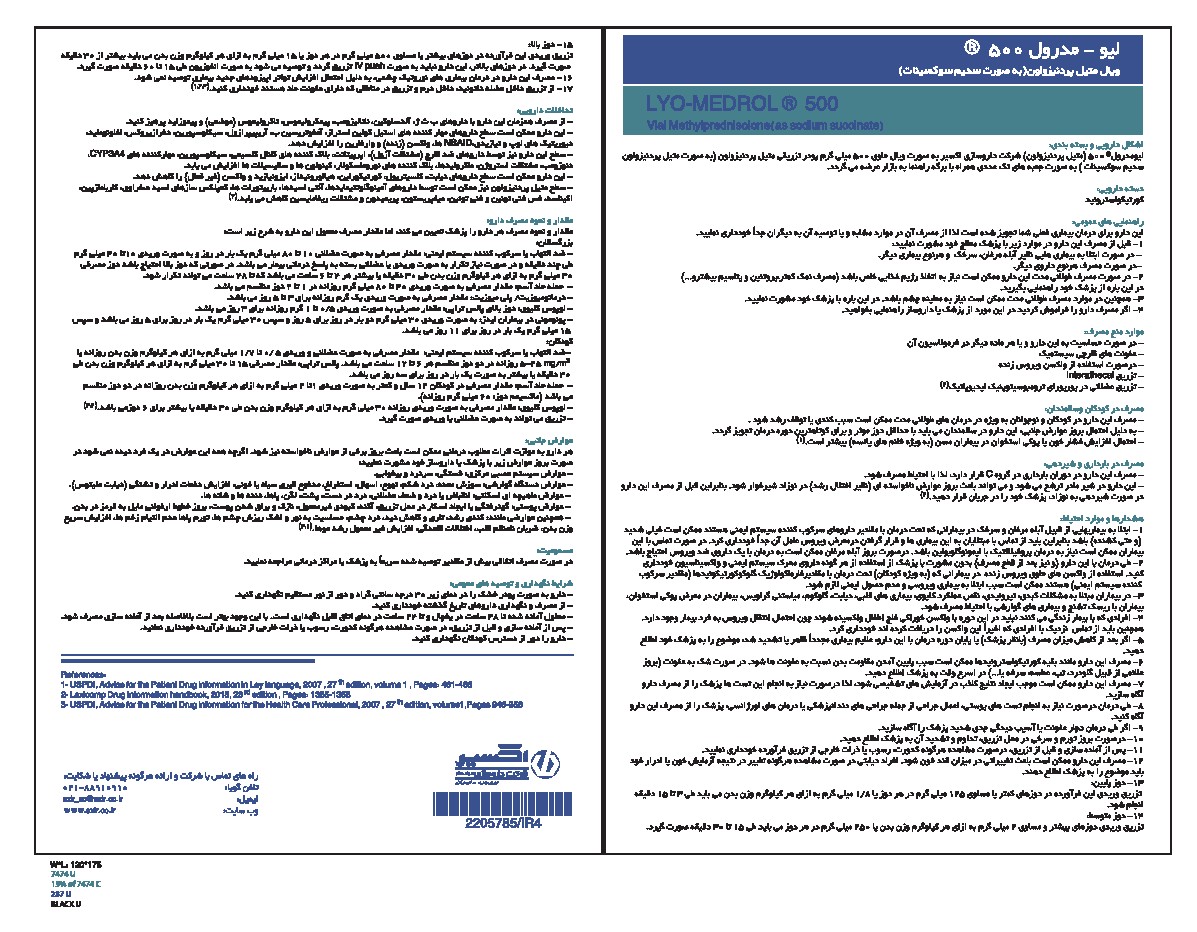LYO-MEDROL
vial Methylprednisolone as sodium succinate 500 mg ( sterile powder for injection )

| Generic Name of Product | Brand Name | Dosage Form | Strength | Pharmacologic Group | Therapeutic Group | Unit Per Pack |
| Methylprednisolone Sodium Succinate | Lyo-medrol® | Vial | 500 mg | Glucocorticoid | Corticosteroids | 20 |
Indications And Usage | Allergic states, Dermatologic diseases, Endocrine disorders, Endocrine disorders, Gastrointestinal diseases, Hematologic disorders, Miscellaneous, Neoplastic diseases, Nervous System, Ophthalmic diseases, Renal diseases, Respiratory diseases, Rheumatic disorders |
Administration | Use only the Bacteriostatic Water For Injection with Benzyl Alcohol when reconstituting Methylprednisolone Sodium Succinate, Use within 48 hours after mixing. When administering Methylprednisolone sodium succinate in high doses intravenously it should be given over a period of at least 30 minutes. Doses up to 250 mg should be given intravenously over a period of at least five minutes. |
Contraindications | Methylprednisolone Sodium Succinate sterile powder is contraindicated:
In systemic fungal infections and patients with known hypersensitivity to the product and its constituents; For intrathecal administration. Reports of severe medical events have been associated with this route of administration. |
Precautions | This product, like many other steroid formulations, is sensitive to heat. Therefore, it should not be autoclaved when it is desirable to sterilize the exterior of the vial.The lowest possible dose of corticosteroid should be used to control the condition under treatment. When reduction in dosage is possible, the reduction should be gradual.Since complications of treatment with glucocorticoids are dependent on the size of the dose and the duration of treatment, a risk/benefit decision must be made in each individual case as to dose and duration of treatment and as to whether daily or intermittent therapy should be used.Kaposi's sarcoma has been reported to occur in patients receiving corticosteroid therapy, most often for chronic conditions. Discontinuation of corticosteroids may result in clinical improvement. |
Adverse Reactions | Allergic reactions, Blood and lymphatic system disorders, Cardiovascular, Dermatologic, Endocrine, Fluid and electrolyte disturbances, Gastrointestinal, Metabolic, Musculoskeletal, Neurologic/Psychiatric, Ophthalmic |
Pregnancy and lactation | Pregnancy: Corticosteroids should be used during pregnancy only if the potential benefit justifies the potential risk to the fetus. Infants born to mothers who have received corticosteroids during pregnancy should be carefully observed for signs of hypoadrenalism. Breastfeeding: Systemically administered corticosteroids appear in human milk and could suppress growth, interfere with endogenous corticosteroid production, or cause other untoward effects. Because of the potential for serious adverse reactions in nursing infants from corticosteroids, a decision should be made whether to discontinue nursing or discontinue the drug, taking into account the importance of the drug to the mother. |
Renal and liver Impairment | In general, dose selection for an elderly patient should be cautious, usually starting at the low end of the dosing range, reflecting the greater frequency of decreased hepatic, renal, or cardiac function, and of concomitant disease or other drug therapy. |
Laboratory Tests | - |

